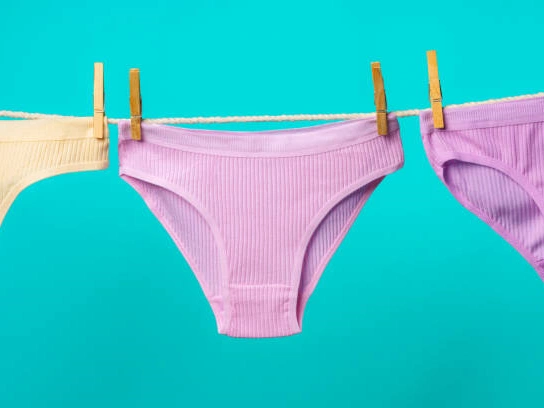We wear underwear every day, but do we really know how often we should change it to keep it looking its best? It may seem obvious, but nuances like personal hygiene, activity level, and even fabric choice all play a role. For years, I just followed the general rule of “every day,” but when I dug deeper, I realized there was a lot more to it. This guide explores some advice and practical tips to help you maintain top-notch intimate hygiene and feel your best.
The Importance of Replacement Frequency to Health

For most people, myself included, the golden rule is simple: change your underwear every day. It’s common advice from health experts, and for good reason. Even if you don’t usually exercise, your body naturally produces sweat, oil, and secretions throughout the day. Clean underwear helps control this moisture and prevents bacteria from growing.
Moisture management: Even in cool weather, your groin area sweats a lot. Changing your underwear every day prevents moisture from building up for long periods of time, which is the perfect environment for bacteria and yeast to grow.
Bacteria control: Our bodies are home to all kinds of bacteria. While many bacteria are harmless, accumulation in warm, moist environments can lead to problems for women, like bacterial vaginosis or urinary tract infections (UTIs).
Odor prevention: The buildup of sweat and bacteria can cause body odor. Clean underwear helps keep you looking fresh all day long.
Skin health: The constant friction of damp underwear can cause skin chafing and irritation. Clean underwear reduces this risk and lets your skin breathe.
How Often Should You Change Your Underwear

While daily changes are the standard, there are certainly situations where I find myself reaching for a second (or even third) pair in a single day. These scenarios elevate the need for freshness and hygiene. Knowing these situations is key to truly understanding how often you should change your underwear beyond the basic rule.
My Personal Triggers for Extra Underwear Changes:
1. After Intense Physical Activity or Sweating
This is a no-brainer for me. After a workout, a long walk on a hot day, or any activity that leaves me feeling sweaty, changing my underwear is paramount.
- Why it’s important: Sweat creates a damp, warm environment that’s perfect for bacterial and fungal growth. Leaving sweaty underwear on for extended periods significantly increases the risk of jock itch, yeast infections, or general skin irritation.
- My routine: I always pack a fresh pair for the gym and change immediately after my cool-down shower. If I’m just profusely sweating from being outdoors, I’ll change as soon as I can get home.
2. Dealing with Vaginal Discharge or Menstrual Flow
For women, natural vaginal discharge is normal, but its volume can vary. During menstruation, even if you’re using pads, tampons, or period underwear, an extra change can be beneficial.
- Why it’s important: Increased moisture from discharge or any minor leaks during your period means a higher chance of bacterial buildup and discomfort. Keeping the area dry is vital.
- My routine: If I notice significant discharge or feel particularly damp, I’ll change my underwear. On heavier period days, even with other protection, a mid-day change of underwear can make me feel much cleaner.
3. Feeling Unwell or Experiencing Infections
If I’m battling a cold, flu, or especially if I’m recovering from a urinary tract infection (UTI) or yeast infection, I become extra diligent about changing my underwear.
- Why it’s important: When your body is fighting off an infection, maintaining optimal hygiene helps prevent reinfection or exacerbation of symptoms. Fresh underwear minimizes the presence of bacteria near the affected area.
- My routine: During an infection, I might change my underwear twice a day or more, ensuring the area stays as dry and clean as possible.
4. Prolonged Travel or Humid Climates
Long flights, road trips, or staying in hot, humid environments can make you feel less fresh than usual.
- Why it’s important: Being in enclosed spaces or humid conditions for extended periods increases perspiration and can make you feel generally less clean.
- My routine: On long travel days, I’ll often pack an extra pair to change into halfway through. In humid climates, I might even opt for lighter fabrics and consider more frequent changes.
What is the Lifespan of Underwear?

Bras generally last 6 to 12 months, depending on the material, how they are used, and how they are cared for. High-quality fabrics, such as cotton or modal, may last longer if cared for properly (gentle wash, air dry), but cheaper synthetic materials will age faster. Signs of aging bras include stretched elastic, fading, holes, or reduced support.
Everyday wearers should replace bras annually, but changing styles frequently may extend their lifespan. Frequent washing, drying at high temperatures, or using harsh detergents will shorten the lifespan of bras. For hygiene and comfort, replace old bras first.
How to Choose the Right Underwear Fabric
The material of your underwear plays a huge role in how often you should change your underwear and how comfortable you feel throughout the day. Some fabrics are far better at managing moisture and promoting breathability than others. This is a vital aspect to consider when building your underwear drawer.
My Preferred Underwear Fabrics:
| Fabric Type | Pros | Cons | Ideal Use |
| Cotton | Highly breathable, absorbent, soft, hypoallergenic. | Every day wear, especially for sensitive skin. | Every day wear, comfortable option for all-day freshness. |
| Modal/Bamboo | Less breathable than natural fibers, they can trap heat. | Very soft, good moisture-wicking, breathable, and sustainable. | It can be more expensive than cotton. |
| Microfiber/Nylon | Quick-drying, smooth, often seamless, good for activewear. | Less breathable than natural fibers, can trap heat. | Workouts, under fitted clothing for smooth lines. |
| Lace/Silk | Aesthetic appeal, lightweight. | Less absorbent, delicate, not ideal for moisture management. | Special occasions, fashion. |
Our Recommendation: For daily wear, we primarily stick to 100% cotton or high-quality cotton blends with a touch of spandex for stretch. They allow my skin to breathe and help prevent moisture buildup, making me feel fresher for longer. For workouts, moisture-wicking synthetics are my go-to.
Tips for Maintaining Optimal Underwear Hygiene
- Change Daily (or More): Swap out underwear daily to prevent bacteria from sweat, discharge, or urine. Exercise or hot weather? Change twice a day to reduce moisture buildup.
- Choose Breathable Fabrics: Opt for cotton or moisture-wicking materials to allow air flow and minimize bacterial growth. Avoid synthetic fabrics that trap heat.
- Wash Properly: Use gentle detergent on cold cycles; skip bleach or fabric softeners. Turn underwear inside out and air-dry to preserve fabric and kill germs.
- Store Clean & Dry: Keep underwear in a ventilated drawer away from damp areas. Fold rather than bunching to avoid creases that harbor moisture.
- Replace when worn: Discard underwear with stretched elastic, holes, or discoloration—usually every 6–12 months. Worn fabric can’t protect against bacteria effectively.
- Post-Activity Care: Change immediately after workouts and rinse sweaty underwear promptly to prevent odor-causing microbes.
Common Misconceptions About Underwear Hygiene

There are a few myths I’ve encountered regarding underwear and hygiene. Let’s clear them up!
- Myth: You can wear the same underwear for two days if you didn’t sweat.
- Reality: Even without noticeable sweat, your body produces natural oils, dead skin cells, and discharge that accumulate. Daily changes are still recommended for optimal hygiene.
- Myth: Going commando is always healthier.
- Reality: While occasional commando can be beneficial for airflow, it depends on your outer clothing. Rough seams, tight pants, or certain fabrics can cause more friction and irritation without the protective barrier of underwear. It’s often better for sleep than for daily activities.
- Myth: All underwear fabrics are created equal.
- Reality: As discussed, fabric choice is critical. Synthetic materials like nylon can trap heat and moisture, while natural fibers like cotton offer superior breathability.
Conclusion
Ultimately, determining how often to change your underwear comes down to a balance between general health advice and your own physical condition. Prioritizing clean, fresh underwear is a simple and effective way to maintain intimate health, prevent discomfort, and improve your overall well-being.
If you are looking to wholesale underwear, please contact us, and we can provide you with high-quality, comfortable underwear.

